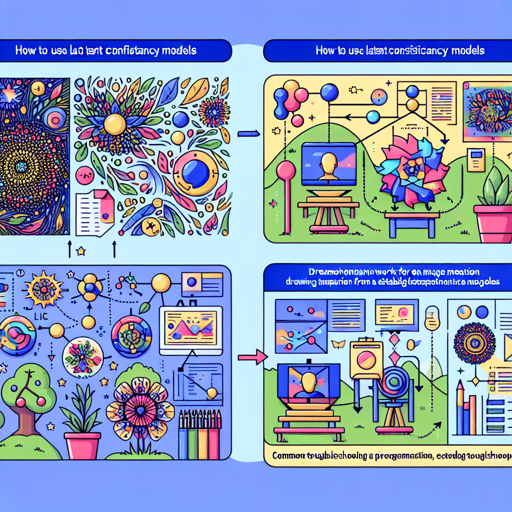Are you interested in synthesizing high-quality images with minimal effort? The Latent Consistency Models (LCM) have made this task easier than ever before. This blog will guide you step-by-step through the process of setting up and using LCM for image generation, along with troubleshooting tips to make your experience smoother.
What are Latent Consistency Models?
Latent Consistency Models are powerful frameworks designed for efficient image generation. They are distilled from the Dreamshaper v7 fine-tuned model of Stable Diffusion v1.5, allowing for high-quality images in remarkably short inference times, especially when employing classifier-free guidance.
Steps to Get Started
Follow these easy steps to install and run Latent Consistency Models:
1. Installation
- First, ensure you have Python installed on your machine.
- Open your command line interface and install the required libraries by running the following commands:
pip install --upgrade diffusers # make sure to use at least diffusers = 0.22
pip install transformers accelerate2. Running the Model
- Now, you need to write a Python script to utilize the model. Here is an example:
from diffusers import DiffusionPipeline
import torch
pipe = DiffusionPipeline.from_pretrained("SimianLuo/LCM_Dreamshaper_v7")
# To save GPU memory, torch.float16 can be used, but it may compromise image quality.
pipe.to(torch_device='cuda', torch_dtype=torch.float32)
prompt = "Self-portrait oil painting, a beautiful cyborg with golden hair, 8k"
num_inference_steps = 4 # Can range from 1 to 50; LCM supports fast inference even at 4 steps.
images = pipe(prompt=prompt, num_inference_steps=num_inference_steps, guidance_scale=8.0, lcm_origin_steps=50, output_type='pil').images3. Explore the Results
Once the code is executed, you will have your generated images saved in a specified format. Be sure to explore the images and see how your prompt shapes the generated results!
Understanding the Code: An Analogy
Think of using Latent Consistency Models like cooking a gourmet dish. The ingredients are your code and commands, the chef is the DiffusionPipeline that brings it all together. You start with basic components (like the Python libraries), mix them (by running your model), and finally, serve a delicious dish (the generated images) ready for enjoyment!
Troubleshooting Tips
If you encounter any issues while running the code, consider these tips:
- Ensure that your Python environment is set up correctly.
- Check that your GPU is supported and has sufficient memory for the processes.
- Try lowering the number of inference steps if you experience memory-related errors.
For more insights, updates, or to collaborate on AI development projects, stay connected with fxis.ai.
Conclusion
By following these steps, you can effectively utilize Latent Consistency Models for high-quality image generation. At fxis.ai, we believe that such advancements are crucial for the future of AI, as they enable more comprehensive and effective solutions. Our team is continually exploring new methodologies to push the envelope in artificial intelligence, ensuring that our clients benefit from the latest technological innovations.

